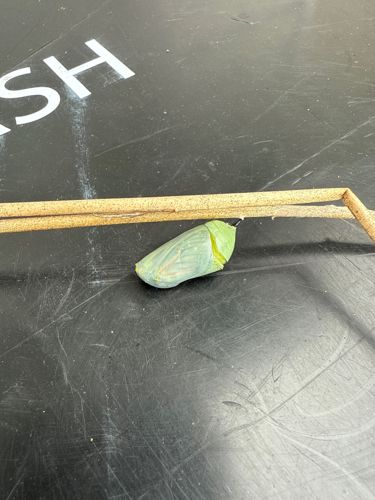Monarch Butterfly chrysalis
Scientific Name: Danaus plexippus
Order & Family: Lepidoptera, Nymphalidae
Size: Chrysalis is typically 2-3 cm (0.8-1.2 inches) long. Adult butterflies have a wingspan of 8.9-10.2 cm (3.5-4 inches).

Natural Habitat
Found in various open habitats including gardens, fields, meadows, and roadsides, particularly where milkweed (their larval food plant) is present. They are migratory, traveling long distances.
Diet & Feeding
As a chrysalis, there is no active feeding; it is a pupal stage. The larva (caterpillar) feeds exclusively on milkweed plants. Adult Monarch butterflies feed on nectar from a variety of flowering plants.
Behavior Patterns
The chrysalis is an inactive, vulnerable stage in the Monarch's life cycle, typically lasting 9-15 days depending on temperature. Inside, the caterpillar undergoes metamorphosis into an adult butterfly. The chrysalis usually hangs upside down from a silken pad attached to a stem or leaf. The vibrant green color provides camouflage.
Risks & Benefits
The Monarch chrysalis itself poses no direct risks. As part of the Monarch lifecycle, it contributes to the species' survival. Monarch butterflies are important pollinators and are a significant part of their ecosystem's food chain. However, Monarch populations face risks due to habitat loss (especially milkweed), pesticide use, and climate change.
Identified on: 9/21/2025